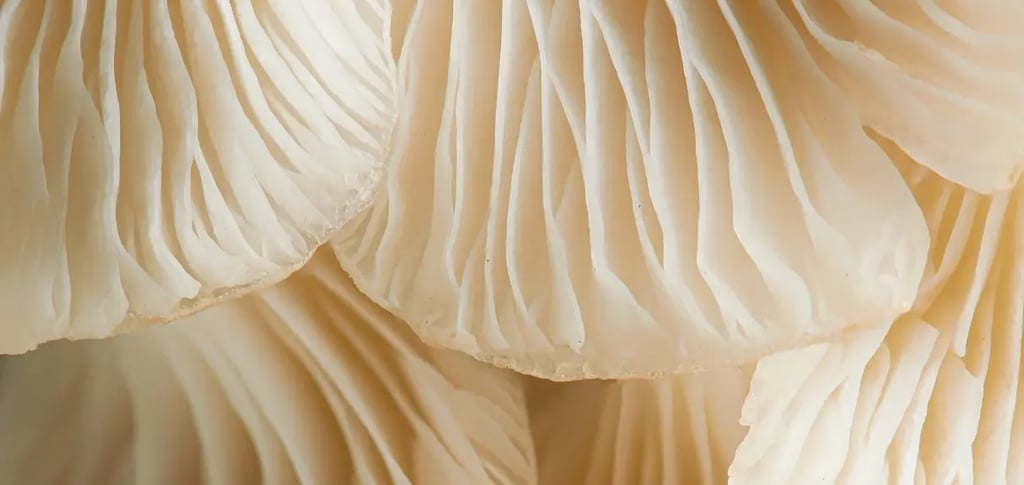Materials of the Future: Why Bio-Based Leathers, Mycelium Packaging, and Algae Textiles Will Define the Next Era of Sustainability
SUSTAINABILITYINNOVATION


As the global climate crisis intensifies, the spotlight on how we produce and consume everyday materials has never been brighter. For decades, industries like fashion and packaging have relied heavily on materials that are cheap, abundant, and convenient — but devastatingly harmful to the environment. Traditional leather, derived from animal agriculture, contributes significantly to greenhouse gas emissions, water pollution, and land degradation. Conventional plastics, which dominate packaging, clog ecosystems and persist for centuries.
The question now is no longer if we need alternatives, but what these alternatives should be — and how soon we can scale them effectively.
The Rise of Bio-Based Leathers: A Plant-Powered Revolution
One of the most promising developments is the surge of bio-based leathers — materials that replicate the look and feel of animal leather but are derived from plants, fungi, or other renewable sources. Among these, pineapple-leaf leather, or Piñatex, has captured significant attention.
Piñatex is crafted from the fibers left behind after harvesting pineapples. This is crucial because it transforms agricultural waste — typically discarded or burned, causing pollution — into a valuable resource. Not only does this reduce waste, but it also provides an additional income stream for farmers, making it a socially conscious innovation as well. Piñatex products have found their way into shoes, bags, and accessories, challenging the dominance of traditional leather without the ethical baggage.
Mycelium leather, another groundbreaking material, takes this innovation further. Mycelium is the root structure of mushrooms — an incredibly fast-growing, naturally biodegradable substance. It can be cultivated in controlled environments, requiring minimal water, no pesticides, and no animal inputs. Fashion brands, including Stella McCartney, have begun experimenting with mycelium-based products, highlighting its potential to replace animal leather in premium markets.
These bio-leathers not only alleviate animal welfare concerns but significantly reduce carbon footprints. Animal agriculture is responsible for approximately 14.5% of global greenhouse gas emissions, according to the Food and Agriculture Organization of the United Nations. Reducing demand for animal leather can contribute meaningfully to emissions cuts.
Algae Textiles: The Next Frontier in Fashion Sustainability
Algae-based textiles are an emerging star in the sustainable materials space. Algae grow rapidly and capture CO₂ as they multiply, meaning they can have a carbon-negative footprint if produced at scale. These textiles are soft, breathable, and infused with natural antioxidants — properties that appeal to both consumers and designers seeking performance and eco-credentials.
Unlike cotton, which consumes vast amounts of water and chemicals, algae require fewer resources to cultivate. Companies are pioneering ways to convert algae biomass into fibers suitable for everything from casual wear to luxury garments. This innovation represents a shift from extractive to regenerative materials — materials that restore ecosystems rather than deplete them.
Beyond Fashion: Mycelium and Algae Packaging
The sustainable materials revolution extends well beyond textiles. Packaging, a major contributor to plastic pollution, is being transformed by mycelium and algae as well.
Mycelium packaging grows around a mold to create a custom-fit, protective casing. It naturally decomposes within weeks, unlike polystyrene or bubble wrap that linger for centuries. This innovation is being adopted by forward-thinking companies in food, electronics, and cosmetics — sectors under increasing pressure to reduce single-use plastics.
Similarly, algae-based bioplastics offer compostable alternatives to petroleum-based plastics. These materials can degrade safely in home composts and even aquatic environments, potentially reducing microplastic pollution that currently chokes marine life.
The Challenges Ahead
Despite the enormous potential, these innovations face significant hurdles. The cost of producing bio-based leathers and algae textiles remains high compared to conventional materials. Scaling supply chains from small-scale labs to industrial levels is complex and capital intensive. Durability and performance metrics are still being perfected, which limits mainstream adoption in certain applications.
Furthermore, consumer awareness is uneven. Many shoppers remain skeptical about new materials or unaware of their benefits. The industry must pair these material innovations with transparent storytelling to build trust and demand.
Why Brands Must Act Now
The urgency of climate change, coupled with shifting consumer values and regulatory pressures, means brands can no longer afford to wait. Early adopters of these materials gain a competitive edge, establishing themselves as leaders in sustainability and innovation.
Moreover, investors increasingly reward companies with strong environmental credentials. As regulations tighten—such as the European Union’s bans on certain single-use plastics and growing carbon pricing—brands entrenched in fossil-fuel-based supply chains will face mounting risks.
A Vision for the Future
Bio-based leathers, mycelium packaging, and algae textiles are more than niche experiments; they are harbingers of a systemic shift toward circular, regenerative economies. They offer a hopeful narrative: that through innovation and responsible sourcing, we can decouple human progress from environmental degradation.
But this future requires collaboration — from researchers, brands, farmers, and consumers alike. Directories and platforms spotlighting these pioneering companies play a crucial role in connecting innovators with conscious consumers and investors.
As consumers, demanding transparency and choosing products made from these materials can accelerate their adoption. As brands, embracing these materials signals a commitment to the planet and future generations.
The materials of the future are already here. The question is whether we will build the industries and economies around them — before it’s too late.


